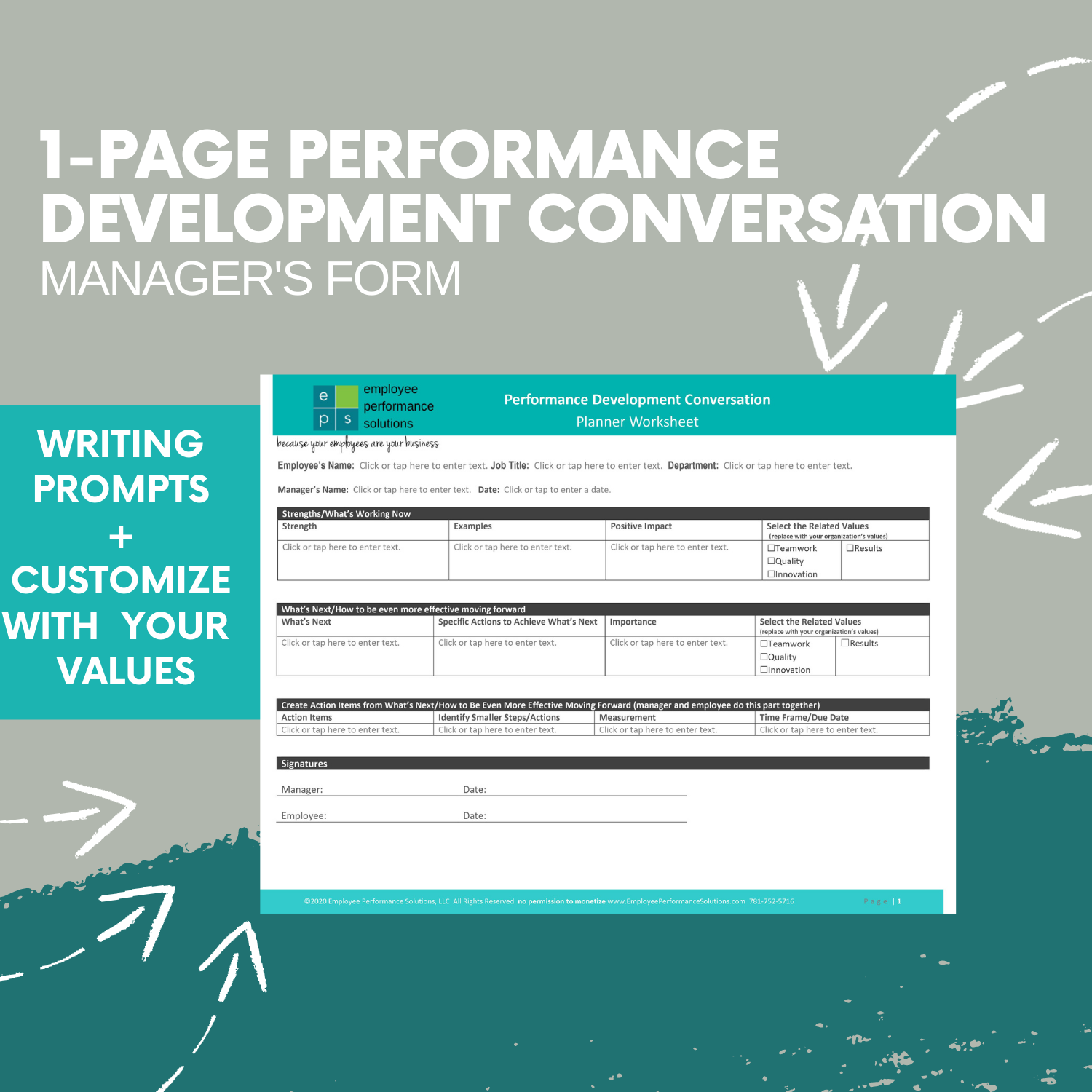
.png?width=1500&name=Copy%20of%20Measure%20Performance%20Without%20Ratings%20(1).png)
 Are you feeling stuck with your annual review and rating process because you need something to measure performance and help make pay decisions? Is this preventing you from transitioning to the more modern process of continuous performance management (ongoing conversations)?
Are you feeling stuck with your annual review and rating process because you need something to measure performance and help make pay decisions? Is this preventing you from transitioning to the more modern process of continuous performance management (ongoing conversations)? Yes, you also know that the traditional route, annual reviews, and rating scales like "Meets Expectations" fall way short of what you need.
Try using the Employee Performance Continuum (download the paper version and let us know if you're interested in the online platform).
We can help you apply the model, but go ahead, print the worksheet, and try it out! There's nothing to lose :-)
.png?width=1500&name=Copy%20of%20Measure%20Performance%20Without%20Ratings%20(3).png)
 Performance review ratings are normally used to help partially or completely guide pay decisions. If you're looking for alternatives and want to know how to make pay adjustments without ratings, you'll first need to measure performance (use the Employee Performance Continuum Model).
Performance review ratings are normally used to help partially or completely guide pay decisions. If you're looking for alternatives and want to know how to make pay adjustments without ratings, you'll first need to measure performance (use the Employee Performance Continuum Model).Take a step back and consider the factors beyond performance that impact pay decisions. Here are some examples:
Figure out the "making pay decisions without ratings puzzle," and you'll have one less roadblock to ditching annual reviews for something better.
Get in touch if you want advice on how to apply the model, but go ahead, print the worksheet, and try it out!

 THIS FORM CONTAINS THE THREE ESSENTIAL ELEMENTS OF A PRODUCTIVE PERFORMANCE CONVERSATION "CHUNKED" INTO SMALLER PIECES WITH WRITING PROMPTS.
THIS FORM CONTAINS THE THREE ESSENTIAL ELEMENTS OF A PRODUCTIVE PERFORMANCE CONVERSATION "CHUNKED" INTO SMALLER PIECES WITH WRITING PROMPTS.This one-page performance review form is not your typical performance evaluation. The focus is on what's working now and how to be more effective in moving forward. I suggest using this as a replacement for your annual performance appraisal to create more of a performance-development style conversation between managers and direct reports.
If your managers need to complete annual performance review forms, then the least you can do is make the ritual less menacing by shortening the form and eliminating redundancy.
Continue assessing performance and use this information to drive the right conversations between your managers and employees